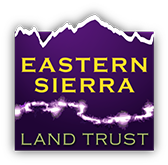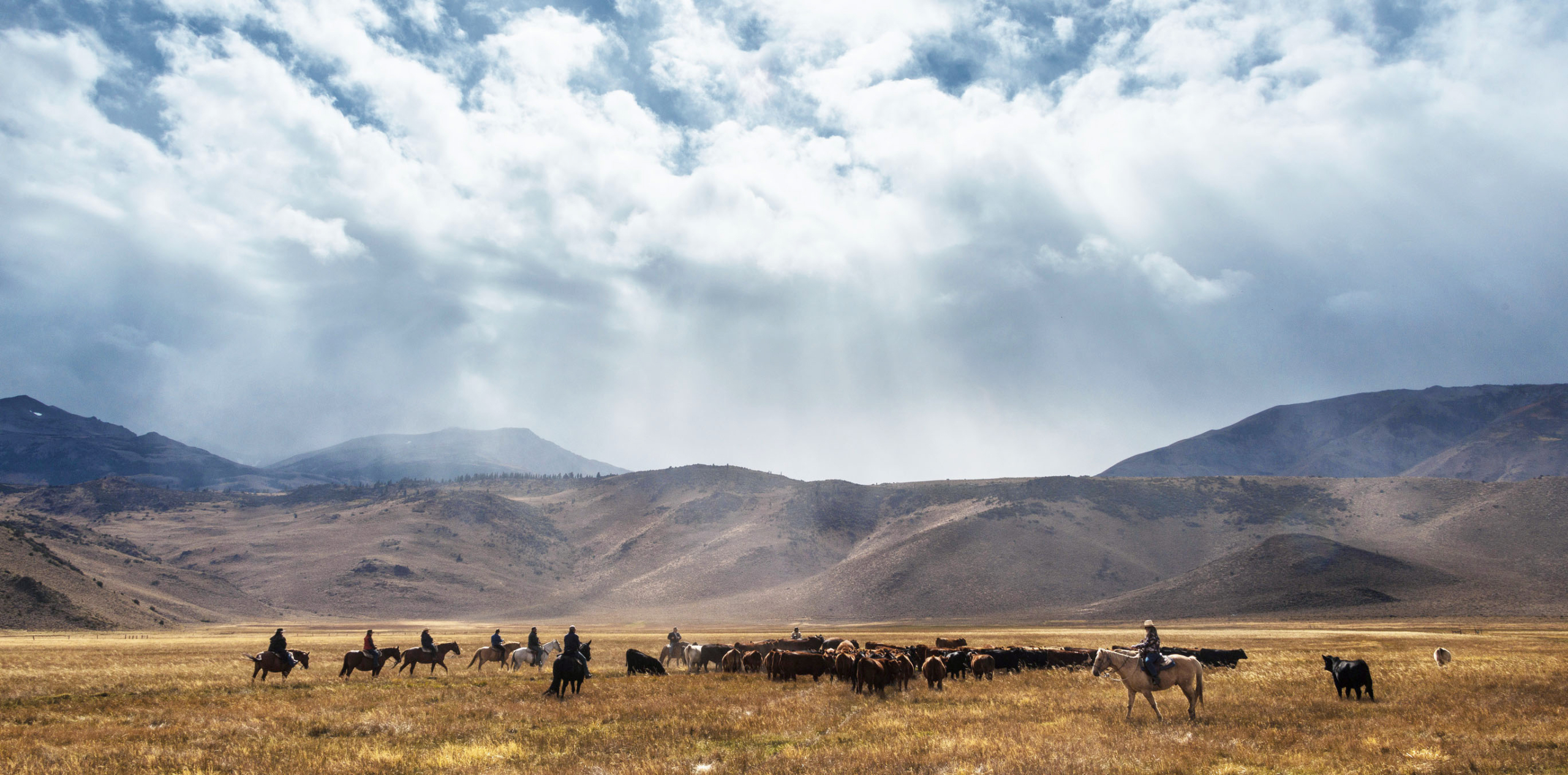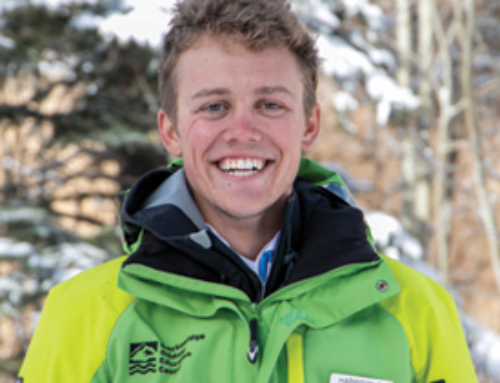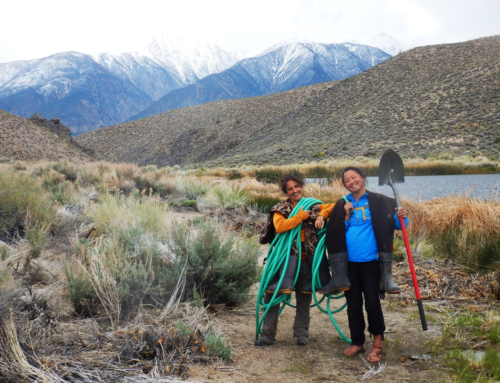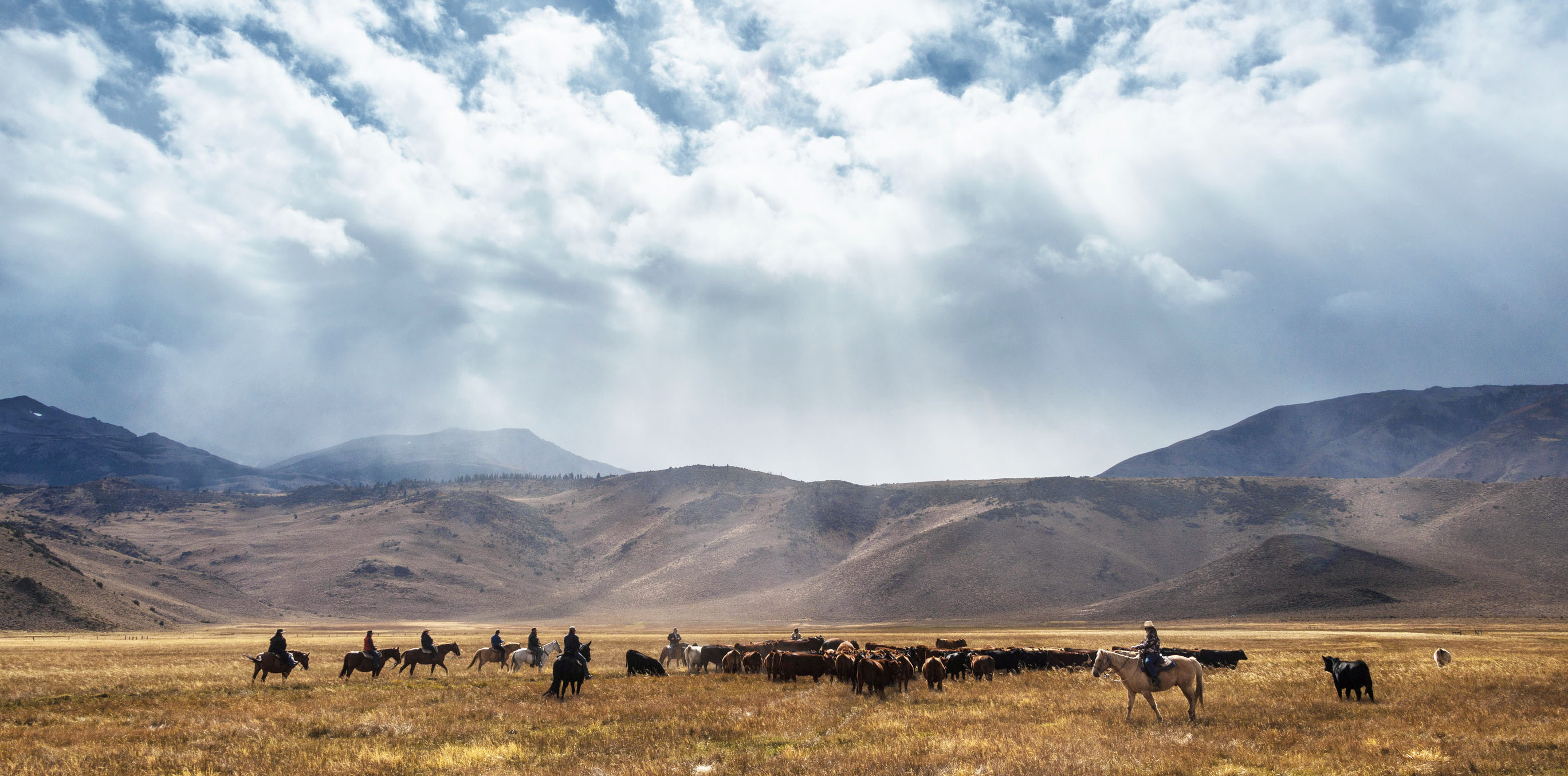
The Hunewill family is one of many in the Eastern Sierra who have been ranching for multiple generations. Families like these keep our region wide open so mule deer, pronghorn, and sage-grouse thrive. Photo by Dwayne Leonard, Ranch Memories Photography.
by Kay Ogden, ESLT Executive Director
I just couldn’t believe the majestic and crazy landscape that was unfolding before me as I rode my bike from Los Angeles to Mono Lake.
It was a hot summer day long ago, and it was my first time in the Eastern Sierra, the first time I smelled rain on its desert sage, or saw its endless vast landscape dotted with charming small towns and ranchlands. I was hooked. Deeply and permanently.
I know I’m not alone. That’s one of the reasons why you’re reading this, and why you are with us as we work so diligently to protect what we all love about this special place: the vast and open wild and working lands.
Once I moved to the Eastside, I got to know my neighbors – the wonderful people, along with the wildlife. I watched seasons of mule deer migrate through wide valleys and basins, bighorn sheep move along steep mountainsides, and pronghorn journey through the rolling Bodie Hills.
While we might think of wildlife as living in the mountains, we can’t forget that many rely on valley flatlands for migration pathways, and for food and water in the wintertime.
Thanks to the rural heritage of the Eastern Sierra, for now, wildlife can still access some of their valley homes. The beautiful fields near Swall Meadows? That’s the migration pathway for our local Round Valley mule deer herd. Those open ranchlands in Bridgeport Valley? That’s some of the best land for Bi-State sage-grouse. And the list goes on. Our wildlife habitat is abundant and diverse, supporting fisheries, migrating deer herds, and important bird flyways.
Since the arrival of settlers, private ownership has (so far) protected much critical land. But as pressure mounts to subdivide and develop, what will happen to wildlife and their homes?
I’m proud to be able to say “that’s where we come in.” Thanks to you, ESLT is working hard alongside willing landowners to protect important Eastern Sierra places – for their scenic, agricultural, natural, recreational, historic, and watershed values. Our working farms and ranches make up much of these vital, and currently undeveloped, private lands.
As I watch the seasonal patterns of this special region, I remember my feelings of wonder as I first saw its big open vistas comprised of public lands, protected lands, and working lands. They weave together, each playing an important role for wildlife and people.
The Eastern Sierra’s strong agricultural tradition is an integral part of our local economy, and it also works hand in hand with our conservation goals.
This majestic landscape is a harmony of many distinct lands. Cooperation and our shared values hold it intact.
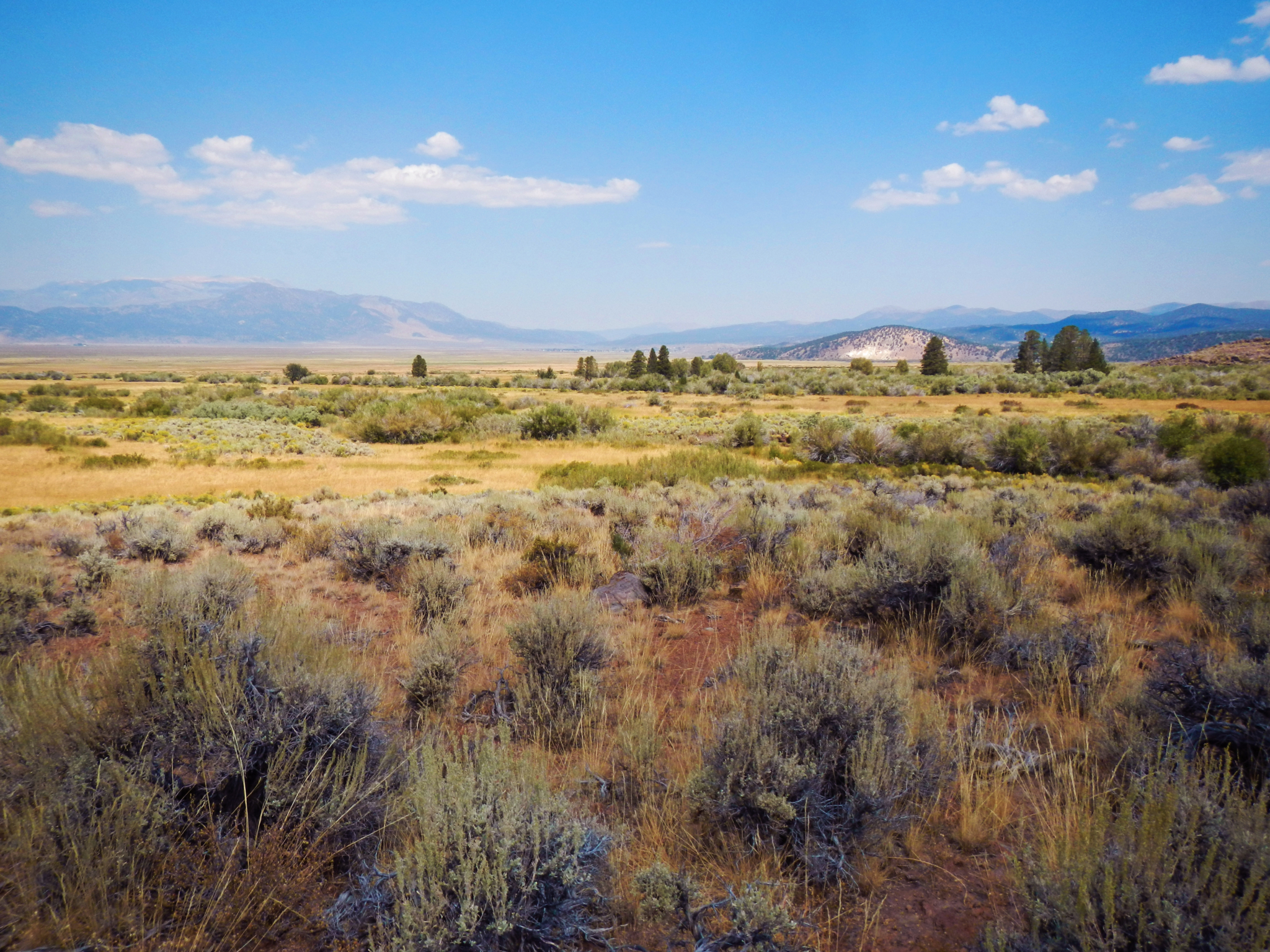
Photo by ESLT

Author Kay Ogden is the Executive Director here at ESLT. If you have questions or want to get in touch with her, you can email her at
